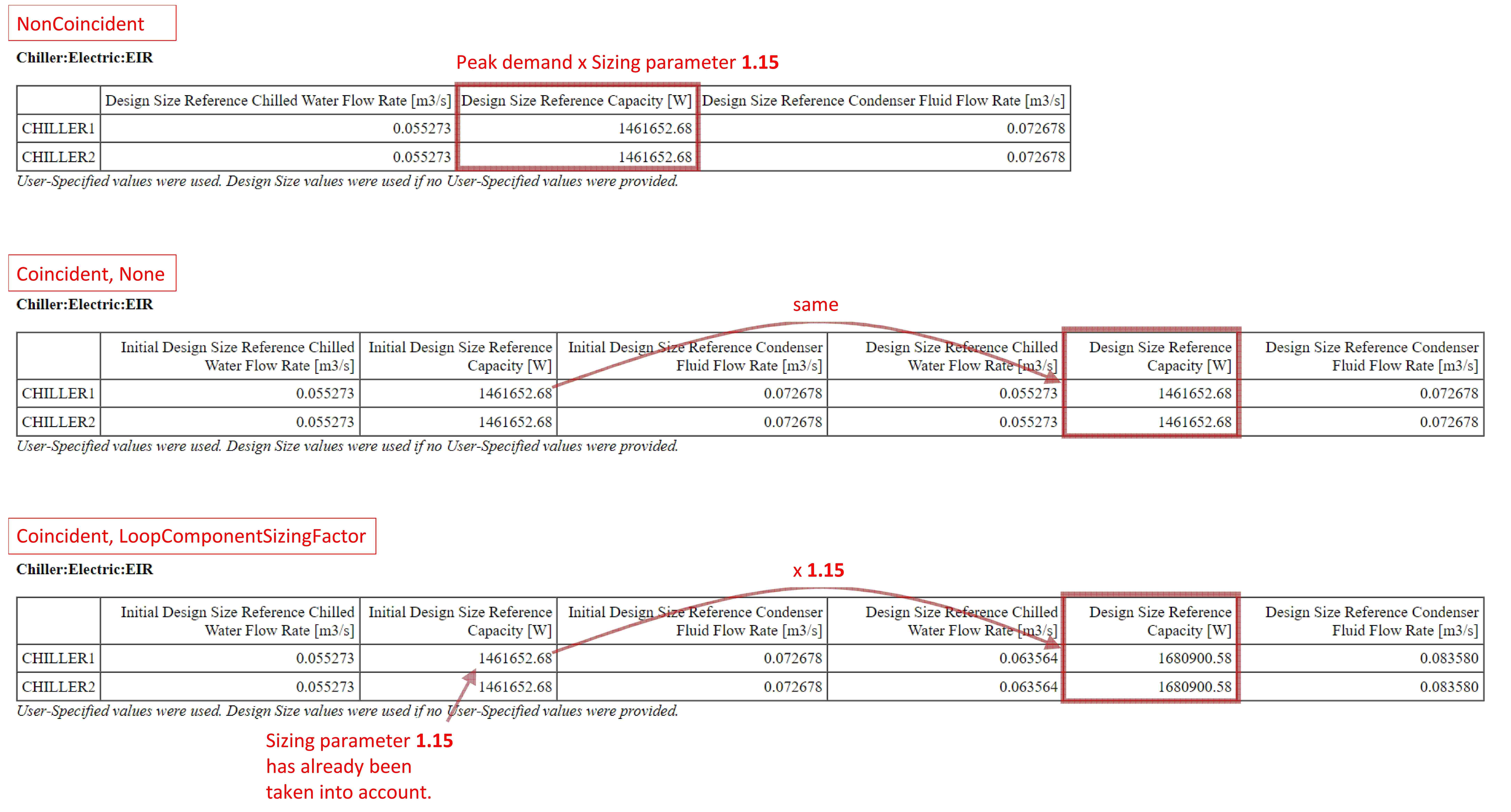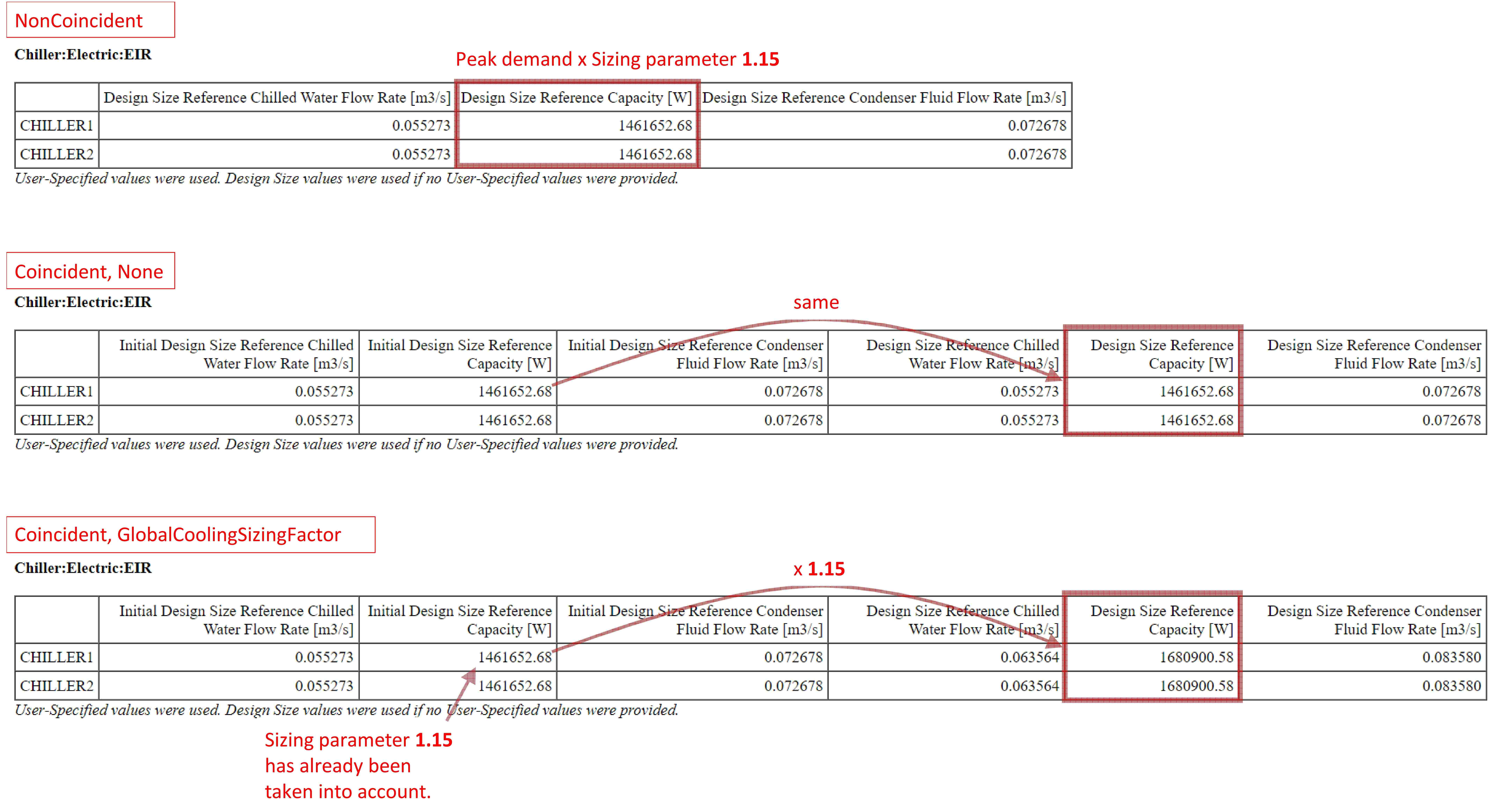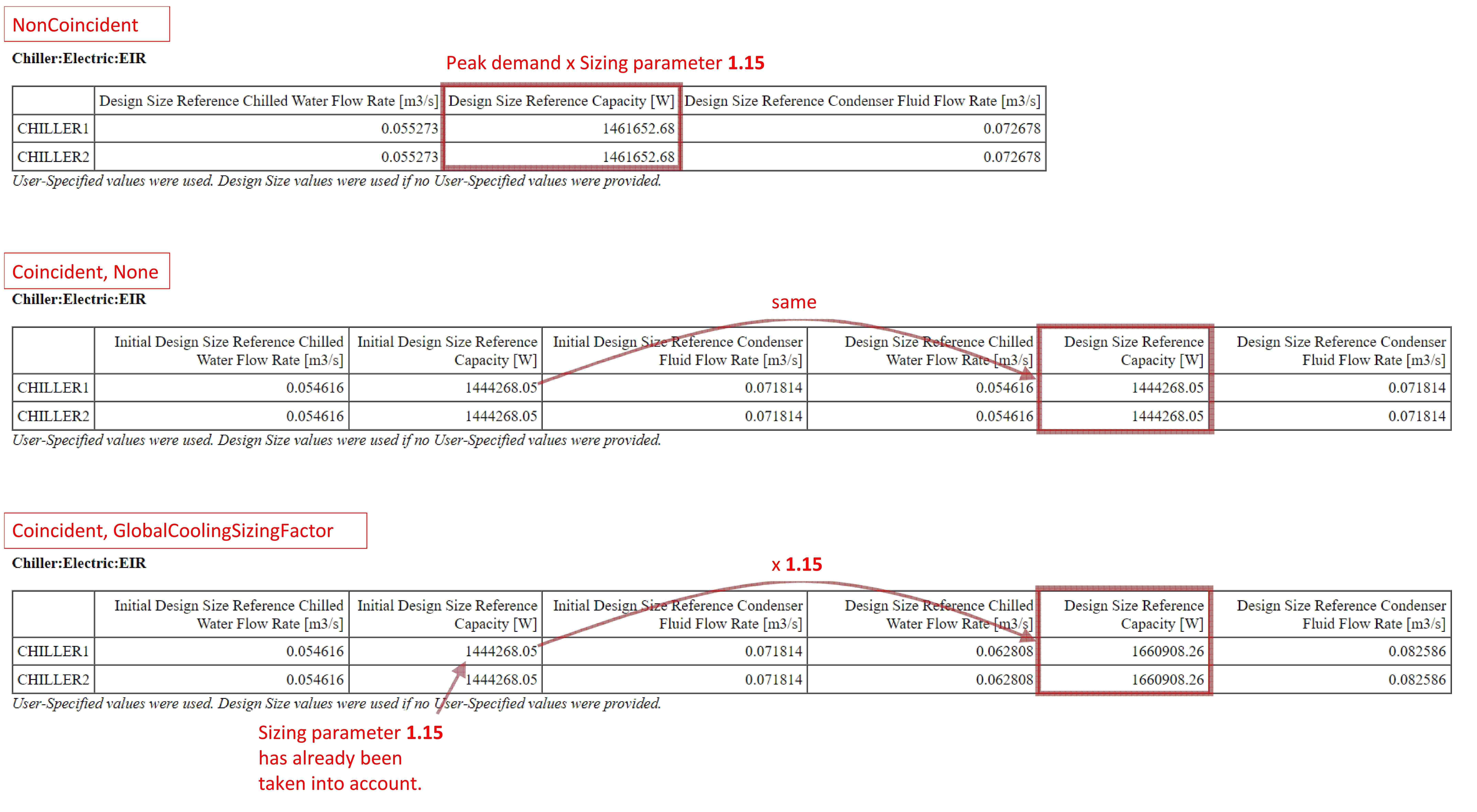My model has PlantLoop (chillers) and CondenserLoop (cooling towers). I did sizing runs in three different settings.
NonCoincidentplan sizingCoincidentplant sizing, andCoincident Sizing Factor ModeisNoneCoincidentplant sizing, andCoincident Sizing Factor ModeisGlobalCoolingSizingFactor
Sizing:Parameters Cooling Sizing Factor is 1.15.
The autosized chiller capacities are shown in the html files as follows.

"NonCoincident" chiller capacity and "Coincident, None" chiller capacity are the same, but it is not addressed in this post. It's probebly because internal loads are more dominant than solar load, and the cooling demand in each zone peaks at the same time. All zones are following the same load schedule.
My question is about Coincident Sizing Factor Mode.
My assumption was that:
- If I choose
None, the autosized chiller capacity would be equal to the coincident peak demand. - If I choose
NonCoincident, the autosized chiller capacity would be 1.15 times the coincident peak demand.
However, the simulation results suggest that:
- When I chose
None, The autosized chiller capacity = The coincident peak demand x 1.15 - When I chose
GlobalCoolingSizingFactor, The autosized chiller capacity = The coincident peak demand x 1.15 x 1.15
Are these the intended function of Coincident Sizing Factor Mode? If that's the case, I should choose None. Who would want to multiply the sizing factor twice?






